So this week I was faced with the challenge of introducing the unfamiliar approach of student-directed learning to the families in my class. I knew many had heard about it through their children and was already getting many questions about it. I assured them that all would be answered and addressed at my Back To School Night presentation before the students were too far into the process of establishing their routines.
I know my class this year and their excited little selves were going home exclaiming things such as:
- I don’t have to do any math if I don’t want to!
- I get to do what I want, ALL of the time!
- Ms. Mel TRUSTS ME to take responsibility for my learning, I am in charge!
Now I am not a parent but I KNOW that if I was and I was being told these things by my 4th grader I would be wondering what the hell was going on up there at the school! So I had to make a plan and address a few key points at Back To School Night that would reassure them that I have not devised a plan that would allow me to sit on Facebook (NB.I don’t even have an account) while the kids had free reign over their day!
STEP 1: What are the key takeaways that I wanted all parents to leave understanding at the end of my 30-minute presentation? This is what I decided were the priority…
- The purpose of student-directed learning.
- What SDL looks like in the classroom.
- How the curriculum requirements are met.
- SDL allows me to meet the individual needs of ALL of my students.
- SDL enables the students to gain a deep meaning of concepts.
- SDL is an authentic way for students to develop skills such as time management.
This is a lot of information to cover in a 30-minute presentation which also requires me to ensure that the parents “get to know me” and the different aspects of the school day. It was time to get creative!
STEP 2: Putting together the presentation.
Over the previous two years, I have presented on how I am creating a student-directed learning environment. These were my starting points of what I was going to put into the presentation. I included many photos of the students during the different stages of the week as well as some clips of the students explaining what their week looks like (last year this was a “Could” do activity for them to include in their portfolios and have come in useful for me as well!).
STEP 3: Creating a hook.
So we always teach the students to “hook their audience”, wouldn’t it be better if I tried to do the same thing? When thinking about explaining the purpose of SDL I took to Twitter to see what I could find that other people were doing and I saw that a teacher had asked their parents to fill out a graph where she was tracking the age the students in her class first started walking. What a fantastic idea (I wish I knew who it came from so I could site this great idea!)! I HAD FOUND MY HOOK!
STEP 4: Presenting to the parents
On the night of Back to School Night, I asked the parents when they arrived to put their child’s name on the graph. It was a great way of explaining to the parents about the value of differentiation. Why is it that we are ok with the students gaining skills as babies at different stages yet we want them to all be learning at the same pace and time when they get to school? The graph enabled them to see that their children all learned to walk, talk, and crawl at different stages.
I highlighted that by allowing the students to be directors of their learning in the classroom they will be able to schedule their tasks when it suits THEIR learning styles. If they find a task challenging they can schedule this at their prime learning time of the day (we have spent a lot of time discussing whether they are morning or afternoon people and how this affects their focus at these times). I also was able to show the parents the different structures in place that the students will be using to help them with the process.
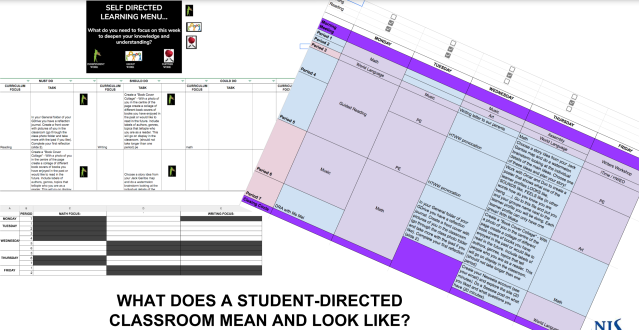

I then showed them some of the reflections from the students from last year, including a video of them that a group of students put together for their portfolios at the end of the year. The parents were able to see the ability I will have to offer a more individualized program for their students.
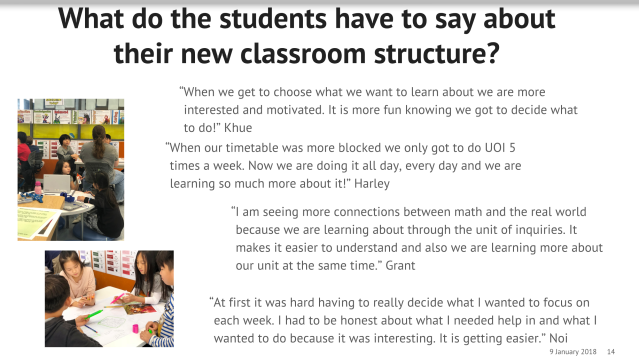
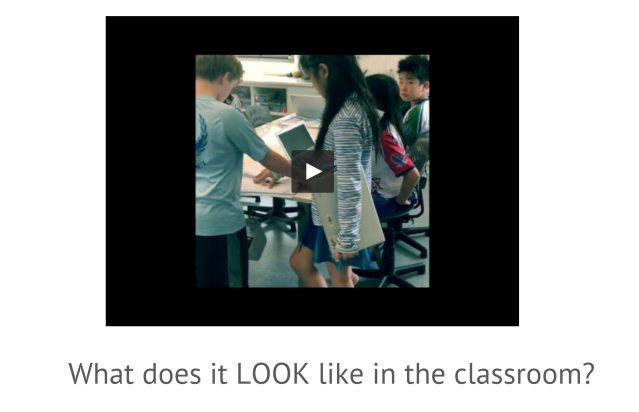
Step 5: Parent Feedback
Following back to school night it has been exciting to hear from some parents who came along. Here is what two of them had to say…
“Thank you also for introducing your way of teaching and your ideas about it. I was really impressed and love the idea of being responsible for the students own learning. As a trainer for life balance and relaxation I – of course – appreciate the idea to somehow adapt the schedule to one’s own biorhythm! It is a quite progressive idea and I LOVE IT and support it!!”
“Thank you for the great presentation you gave on Back to School night. I really appreciated hearing more about your approach and I am excited to follow … development of his schedule and learning this year.”
The most exciting part for me though was the feedback from my students the following day. They were so excited to have been talking with their parents about the different things that they have been doing in the classroom and the new understanding that they have of themselves as learners. This is the best result for me, to have the students connecting with their parents and sharing the learning journey with them.
Step 6: The future
I have invited parents to come in and be involved in the classroom and see how it all works. I believe that an “open door policy” is the best way for the parents to feel included and informed about how their students are learning. I look forward to seeing how the year progresses and am hopeful the parents will be with us for the journey…and now understand that their students are still doing math every day 😉



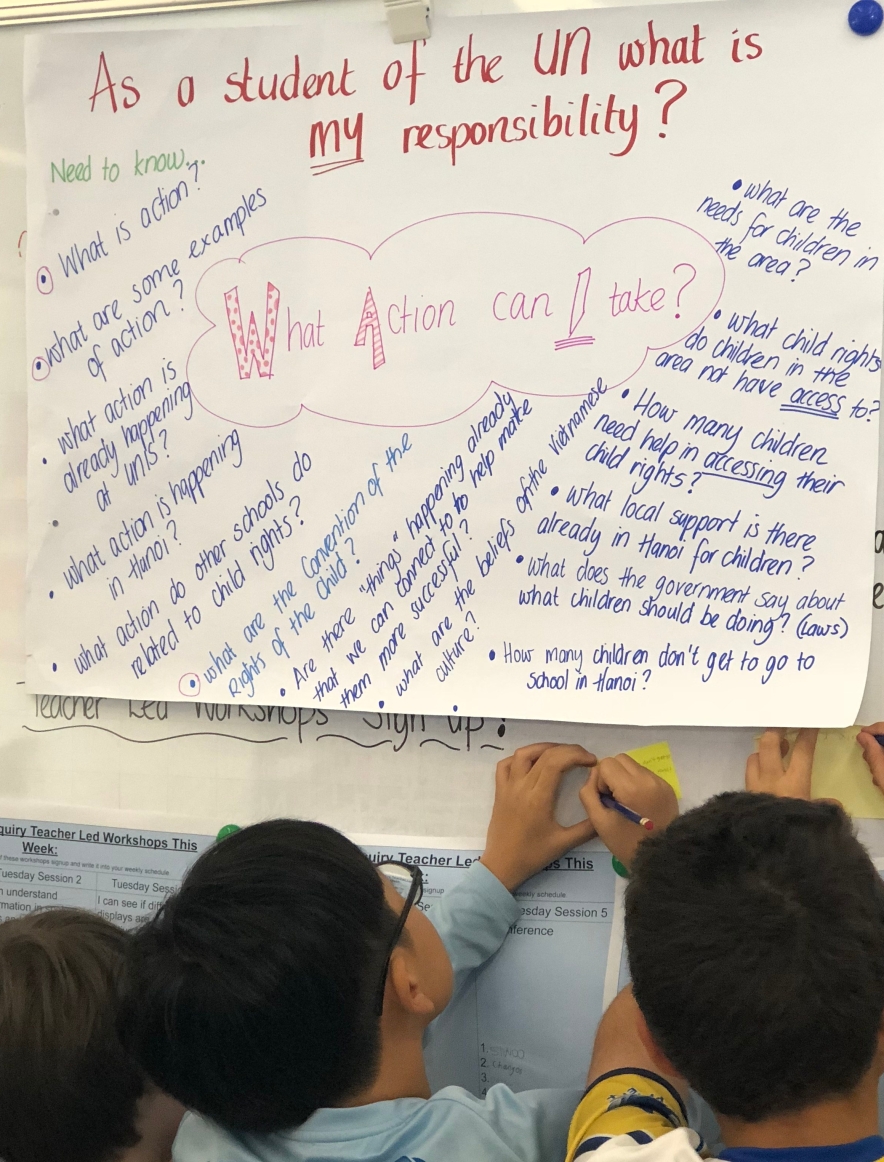
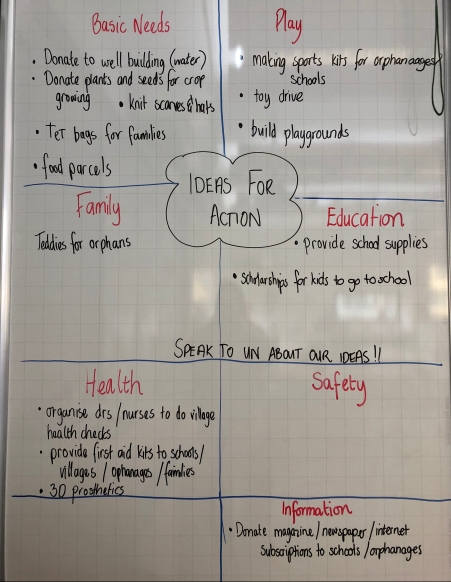 At the end of the Sharing the Planet unit the class brainstormed ideas for taking action towards helping children in Vietnam access more of their rights.
At the end of the Sharing the Planet unit the class brainstormed ideas for taking action towards helping children in Vietnam access more of their rights. Students broke up into small groups focused on one of the child rights that they felt passionate for. They researched different NGO (non government organisations) and service learning projects within Hanoi and the school that would be a good partnership for them to work with. The made connections to one or more of the UN SDG’s (sustainable development goals). AND finally they created their social enterprise company name, slogan and logo!
Students broke up into small groups focused on one of the child rights that they felt passionate for. They researched different NGO (non government organisations) and service learning projects within Hanoi and the school that would be a good partnership for them to work with. The made connections to one or more of the UN SDG’s (sustainable development goals). AND finally they created their social enterprise company name, slogan and logo!




